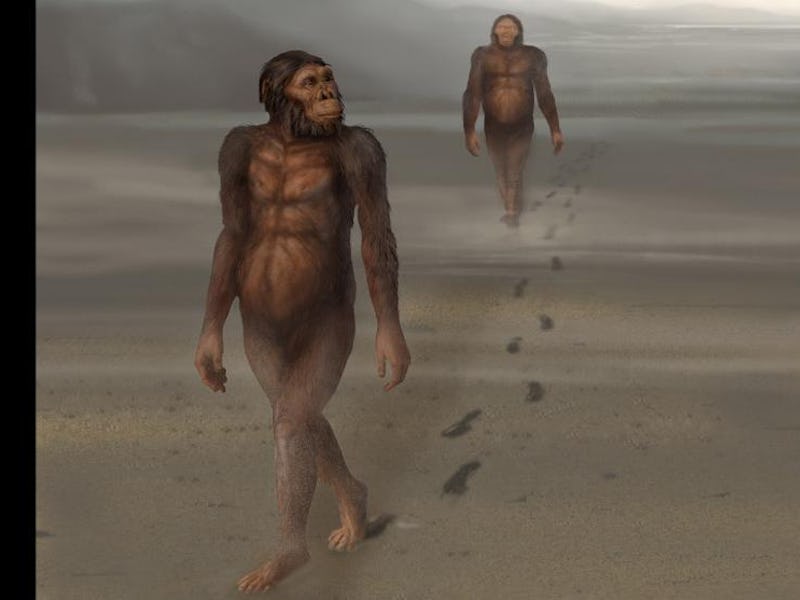3.6 Million Years Ago, Human-Like Ancestors Were Already Walking Like We Do
'These hominins probably looked like us when they walked.'

In Planet of the Apes chimps, gorillas, and orangutans are considered highly evolved because of their ability to speak. But there’s another crucial difference between these apes and those of the real world: They spend their time walking upright. While bipedalism isn’t unheard of in the ape world, straight-backed movement is typically reserved for humans — a factor wrought by evolution but with an unknown origin.
However, the mystery of when hominins made the transition from ape-like crouching to upright walking is now a step towards being solved. On Sunday, at the 2018 Experimental Biology conference in San Diego, California, scientists from the University of Arizona and the University at Albany presented evidence that hominins were walking upright with a straight posture at least 3.6 million years ago. This discovery, determined by ancient footprints, means that human-like steps were taken before Homo sapiens even existed: Our direct ancestors emerged between 200,000 and 300,000 years ago.
“These hominins probably looked like us when they walked.”
“Fossil footprints are truly the only direct evidence of walking in the past,” co-author David Raichlen, Ph.D., explains in a statement. “By 3.6 million years ago, our data suggest that if you can account for the differences in size, hominins were walking in a way that is very similar to living humans. While there may have been some nuanced differences, in general, these hominins probably looked like us when they walked.”
Comparative footprints: A belongs to a modern human, B belongs to a modern human walking crouched, and C belongs to an ancient hominin.
The ancient footprints analyzed are a part of the Laetoli footprints famously discovered in Tanzania by paleoanthropologist Mary Leaky, Ph.D., in 1976.
While the find has been lauded for years as early evidence of bipedalism, what wasn’t known was the posture of the ancient creatures that left them there. It’s thought that hominins began walking on two legs about seven million years ago — approximately five million years before the genus Homo emerged — but experts have theorized that th walk was still bent-legged and ape-like.
This new study demonstrates otherwise: Raichlen and paleoanthropologist Adam Gordon, Ph.D. compared the shape and depth of the ancient footprints to those left by human volunteers, who were asked to walk in an upright posture or a stooped posture. When the scientists analyzed the impressions made by the toe vs. the heel they determined that the Laeoli footprints were much more like modern-day steps than those left by apes — the center of pressure of these prints reflecting the upright posture of the walker.
Replica at the Laetoli footprints at the National Museum of Nature and Science in Tokyo, Japan.
While this discovery doesn’t mean we know exactly at what stage of human evolution hominins were at when this upright walking began, it does hint that these people were able to endure longer journeys because of upright, bipedal walking.
Scientists believe that long legs and straight backs were what gave Homo erectus the ability to run long distances around 1.89 million years ago. It’s likely that the hominins who left the Laetoli footprints were on their way to that same capability.
“The data suggest that by this time in our evolutionary history, selection for reduced energy expenditures during walking was strong,” Raichlen explains. “This work suggests that, by 3.6 million years ago, climate and habitat changes likely led to the need for ancestral hominins to walk longer distance during their daily foraging bouts. Selection may have acted at this time to improve energy economy during locomotion, generating the human-like mechanics we employ today.”